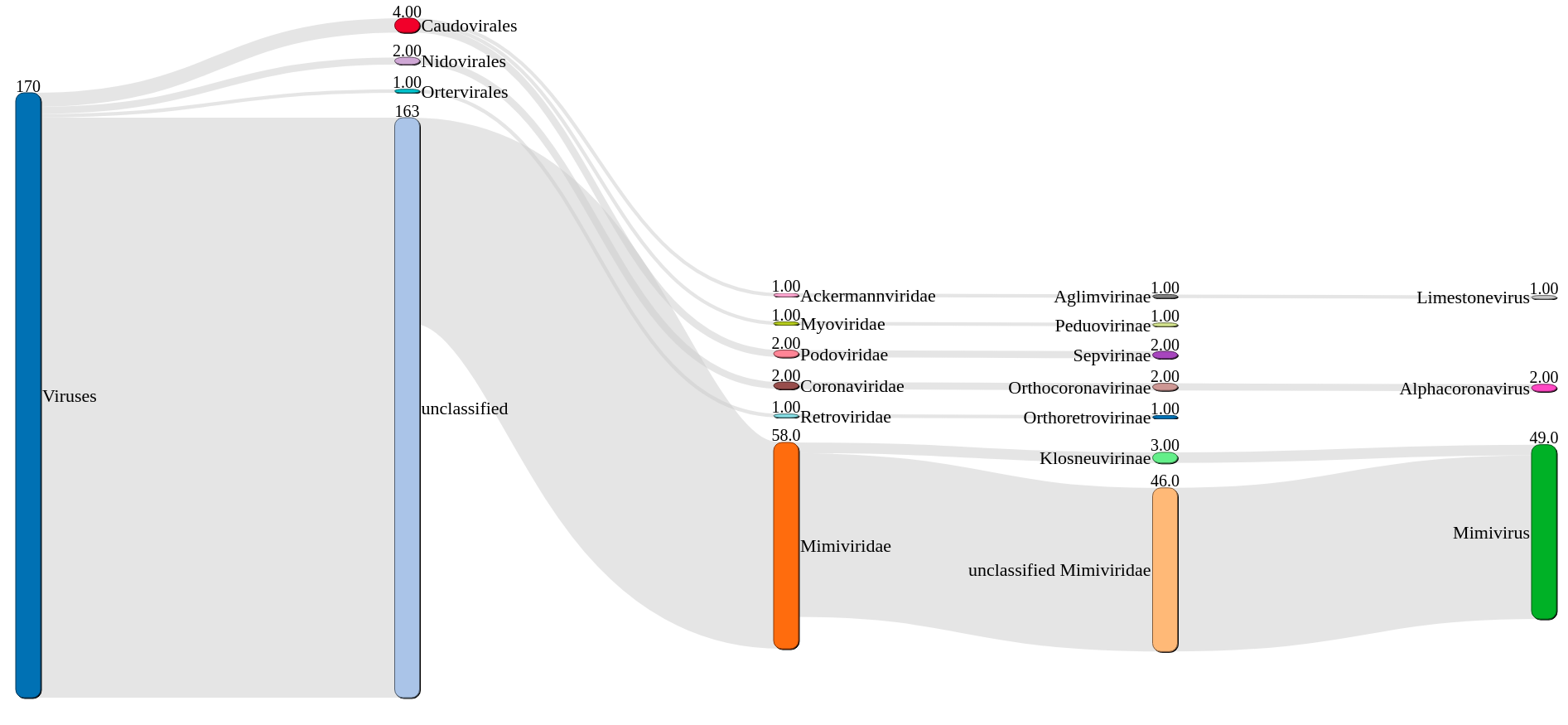



VIRify

VIRify is a recently developed pipeline for the detection, annotation, and taxonomic classification of viral contigs in metagenomic and metatranscriptomic assemblies. The pipeline is part of the repertoire of analysis services offered by MGnify. VIRify’s taxonomic classification relies on the detection of taxon-specific profile hidden Markov models (HMMs), built upon a set of 22,014 orthologous protein domains and referred to as ViPhOGs.
VIRify was implemented in CWL.
What do I need?
The current implementation uses CWL version 1.2 dev+2. It was tested using Toil version 4.10 as the workflow engine and conda to manage the software dependencies.
Docker - Singularity support
Soon…
Setup environment
conda env create -f cwl/requirements/conda_env.yml
conda activate viral_pipeline
Basic execution
cd cwl/
virify.sh -h
A note about metatranscriptomes
Although VIRify has been benchmarked and validated with metagenomic data in mind, it is also possible to use this tool to detect RNA viruses in metatranscriptome assemblies (e.g. SARS-CoV-2). However, some additional considerations for this purpose are outlined below:
1. Quality control: As for metagenomic data, a thorough quality control of the FASTQ sequence reads to remove low-quality bases, adapters and host contamination (if appropriate) is required prior to assembly. This is especially important for metatranscriptomes as small errors can further decrease the quality and contiguity of the assembly obtained. We have used TrimGalore for this purpose.
2. Assembly: There are many assemblers available that are appropriate for either metagenomic or single-species transcriptomic data. However, to our knowledge, there is no assembler currently available specifically for metatranscriptomic data. From our preliminary investigations, we have found that transcriptome-specific assemblers (e.g. rnaSPAdes) generate more contiguous and complete metatranscriptome assemblies compared to metagenomic alternatives (e.g. MEGAHIT and metaSPAdes).
3. Post-processing: Metatranscriptomes generate highly fragmented assemblies. Therefore, filtering contigs based on a set minimum length has a substantial impact in the number of contigs processed in VIRify. It has also been observed that the number of false-positive detections of VirFinder (one of the tools included in VIRify) is lower among larger contigs. The choice of a length threshold will depend on the complexity of the sample and the sequencing technology used, but in our experience any contigs <2 kb should be analysed with caution.
4. Classification: The classification module of VIRify depends on the presence of a minimum number and proportion of phylogenetically-informative genes within each contig in order to confidently assign a taxonomic lineage. Therefore, short contigs typically obtained from metatranscriptome assemblies remain generally unclassified. For targeted classification of RNA viruses (for instance, to search for Coronavirus-related sequences), alternative DNA- or protein-based classification methods can be used. Two of the possible options are: (i) using MashMap to screen the VIRify contigs against a database of RNA viruses (e.g. Coronaviridae) or (ii) using hmmsearch to screen the proteins obtained in the VIRify contigs against marker genes of the taxon of interest.
Contact us
MGnify helpdeskVersion History
Version 1 (earliest) Created 8th Jun 2020 at 11:29 by Laura Rodriguez-Navas
Added/updated 1 files
Open
 master
master8df8a6c
 Creators and Submitter
Creators and SubmitterCreator
Additional credit
Martin Hölzer, Alexandre Almeida, Guillermo Rangel-Pineros and Ekaterina Sakharova
Submitter
Views: 5191 Downloads: 1264
Created: 8th Jun 2020 at 11:29
Last updated: 8th Mar 2021 at 21:57
 Tags
Tags Attributions
AttributionsNone
 View on GitHub
View on GitHub https://orcid.org/0000-0003-3472-3736
https://orcid.org/0000-0003-3472-3736